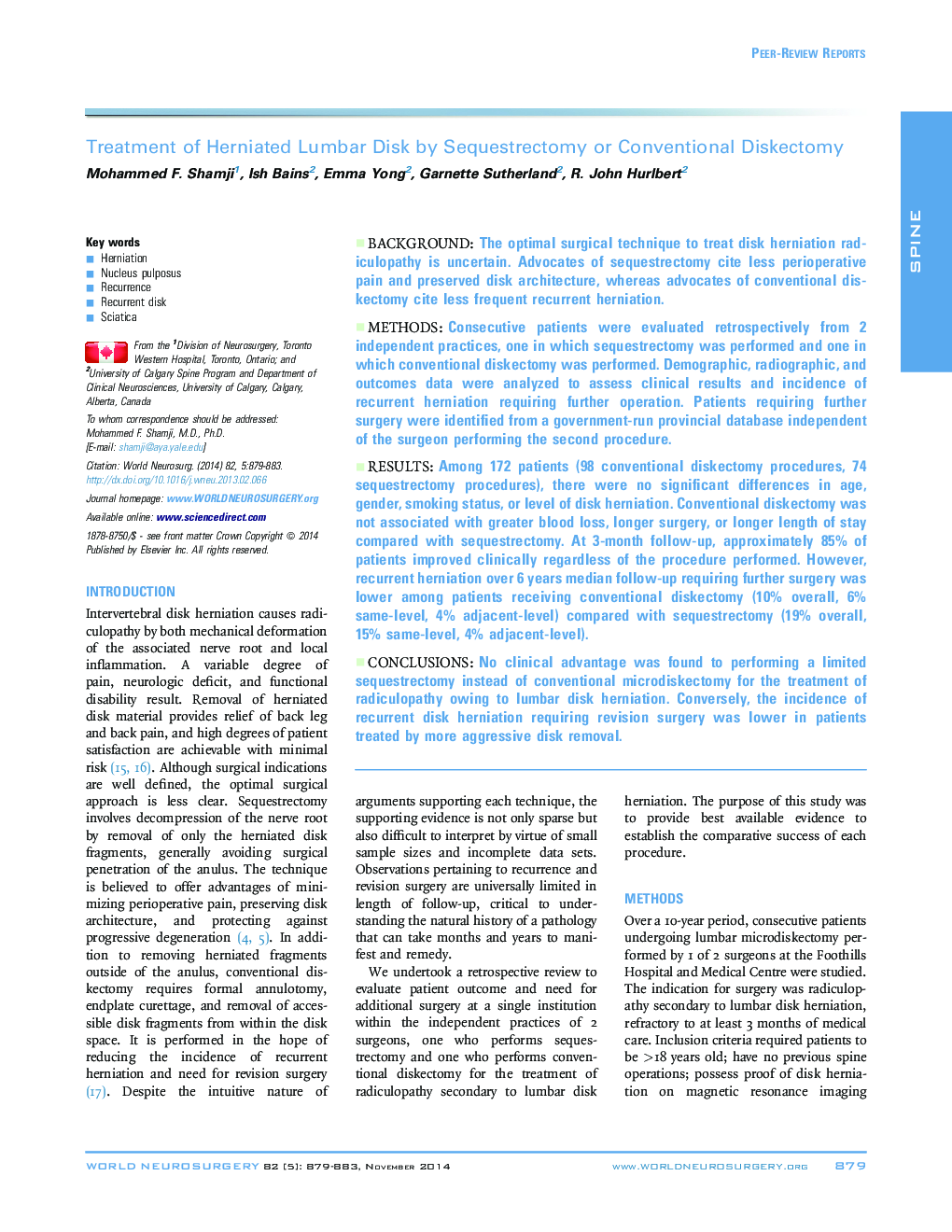| Article ID | Journal | Published Year | Pages | File Type |
|---|---|---|---|---|
| 3095339 | World Neurosurgery | 2014 | 5 Pages |
BackgroundThe optimal surgical technique to treat disk herniation radiculopathy is uncertain. Advocates of sequestrectomy cite less perioperative pain and preserved disk architecture, whereas advocates of conventional diskectomy cite less frequent recurrent herniation.MethodsConsecutive patients were evaluated retrospectively from 2 independent practices, one in which sequestrectomy was performed and one in which conventional diskectomy was performed. Demographic, radiographic, and outcomes data were analyzed to assess clinical results and incidence of recurrent herniation requiring further operation. Patients requiring further surgery were identified from a government-run provincial database independent of the surgeon performing the second procedure.ResultsAmong 172 patients (98 conventional diskectomy procedures, 74 sequestrectomy procedures), there were no significant differences in age, gender, smoking status, or level of disk herniation. Conventional diskectomy was not associated with greater blood loss, longer surgery, or longer length of stay compared with sequestrectomy. At 3-month follow-up, approximately 85% of patients improved clinically regardless of the procedure performed. However, recurrent herniation over 6 years median follow-up requiring further surgery was lower among patients receiving conventional diskectomy (10% overall, 6% same-level, 4% adjacent-level) compared with sequestrectomy (19% overall, 15% same-level, 4% adjacent-level).ConclusionsNo clinical advantage was found to performing a limited sequestrectomy instead of conventional microdiskectomy for the treatment of radiculopathy owing to lumbar disk herniation. Conversely, the incidence of recurrent disk herniation requiring revision surgery was lower in patients treated by more aggressive disk removal.
